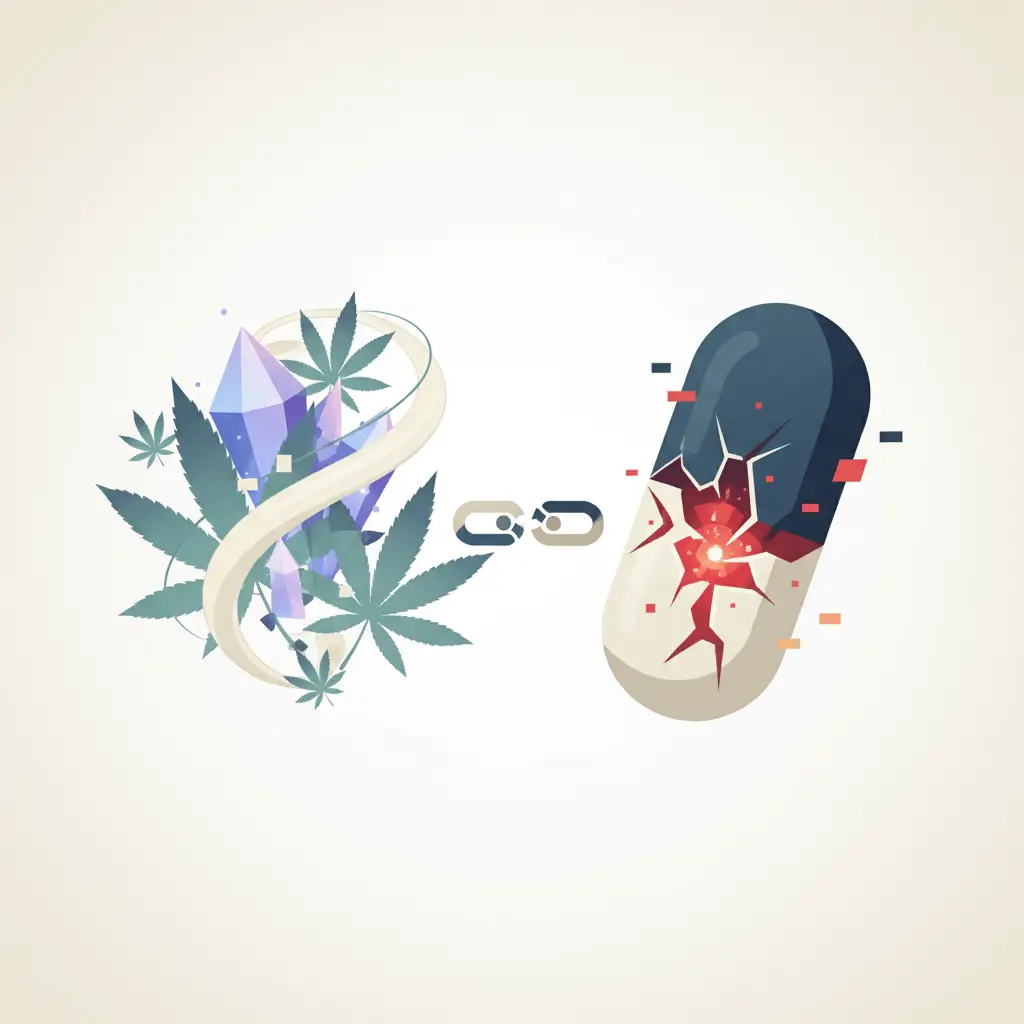Understanding Speed Drugs
Speed, also known as amphetamine sulphate, is a powerful stimulant drug that affects the central nervous system. It is typically sold as an off-white or pinkish powder or crystals, but it can also come in a paste form that is white/grey or brown in color and damp and gritty. When taken, speed can produce a range of physical and psychological effects.

What is Speed?
Speed is a type of amphetamine that stimulates the release of neurotransmitters such as dopamine and norepinephrine in the brain. It increases energy levels, alertness, and focus, and can also reduce appetite. The drug is often used recreationally for its stimulant effects and the feelings of euphoria it can induce. However, it is important to note that speed is classified as a Class B drug, making it illegal to possess, give away, or sell. The legal consequences for possession can include up to 5 years in prison and an unlimited fine, while supplying can result in up to 14 years in prison.
Physical and Psychological Effects of Speed
The effects of speed are felt immediately when injected or smoked, while snorting or swallowing it can take up to half an hour for the effects to appear. The duration of the effects can last up to 6 hours, depending on the dose. Some of the common physical effects of speed use include:
- Increased heart rate and blood pressure
- Elevated body temperature
- Dilated pupils
- Reduced appetite
- Increased energy and alertness
- Increased stamina and endurance
However, speed can also lead to a range of psychological effects. While some individuals may experience feelings of euphoria, increased confidence, and enhanced mood, others may become agitated, anxious, or paranoid. In some cases, speed use can result in psychosis, with individuals experiencing delusions, hallucinations, and other symptoms of mental distress. The drug can also have negative effects on learning and concentration, making it difficult to focus or retain information.
It's important to be aware of the dangers and risks associated with speed use. The short-term effects can be unpredictable and may vary from person to person. Furthermore, the long-term use of speed can lead to physical and psychological dependence, as well as a range of health complications. If you or someone you know is struggling with speed addiction, it is crucial to seek help and support. Treatment options and resources are available to assist in the recovery process.
Dangers and Risks of Speed Use
Speed, also known as amphetamine sulphate, is a powerful stimulant drug that can have significant dangers and risks associated with its use. In this section, we will explore the short-term effects of speed, the long-term effects, and the legal consequences of its use.
Short-Term Effects of Speed
When taking speed, individuals may experience a range of feelings and effects. Some of the short-term effects of speed include increased energy, reduced appetite, and heightened alertness. It can also lead to feelings of euphoria, increased confidence, and enhanced sociability.
However, the short-term effects of speed can also be detrimental. Users may experience anxiety, agitation, and irritability. The drug can cause an increased heart rate, elevated blood pressure, and dilated pupils. Other physical effects may include dry mouth, excessive sweating, and tremors. Speed can also negatively impact cognitive functioning, leading to impaired judgment and decision-making.
Long-Term Effects of Speed
Regular use of speed can have long-term effects on both physical and mental health. Prolonged use of the drug can lead to a prolonged comedown that may last several days, leaving users feeling lethargic and sad. It can also result in issues with learning and concentration.
Long-term use of speed can lead to tolerance, dependence, and addiction. Individuals may require larger doses of the drug to feel its effects and can become preoccupied with thoughts of using speed. Withdrawal symptoms, such as exhaustion, disturbed sleep, and increased appetite, can occur when attempting to stop or reduce use, but these symptoms typically subside within a week.
Legal Consequences of Speed Use
Speed is classified as a Class B drug in many countries, including the United Kingdom. Possession, supply, and production of speed are illegal and can result in severe legal consequences. In the UK, possession can lead to up to 5 years in prison and an unlimited fine, while supplying can result in up to 14 years in prison.
The legal consequences of speed use vary by country. For example, in the Czech Republic, possession of methamphetamine (a form of amphetamine) exceeding 2 grams can result in 1 to 8 years of imprisonment. Production and distribution can lead to imprisonment for up to 5 years, or up to 10 years under certain conditions like involvement in organized crime or against a child.
It is important to note that the legal consequences of speed use can have a lasting impact on individuals' lives. It is always advisable to seek help and support to overcome any issues related to speed use and to understand the specific legal implications in your jurisdiction.
Understanding the dangers and risks associated with speed use is crucial for making informed decisions about drug use and seeking appropriate help and support. If you or someone you know is struggling with speed addiction, there are treatment options available to support recovery. Visit our article on getting help for speed addiction to learn more about treatment options and available resources.
How Speed Works in the Body
When it comes to understanding the effects of speed, it's important to delve into its mechanism of action and the stimulant effects it has on the body.
Mechanism of Action
Speed, also known as amphetamine sulphate, is a powerful stimulant drug that affects the central nervous system. It is usually sold as an off-white or pinkish powder or crystals, although it can also be found in paste form, which is white/grey or brown in color and damp and gritty.
Once ingested, speed is rapidly absorbed into the bloodstream and reaches the brain. Its primary mode of action involves increasing the release of two neurotransmitters: norepinephrine and dopamine. Norepinephrine is responsible for regulating arousal and stress responses, while dopamine is associated with pleasure and reward. By enhancing the release of these neurotransmitters, speed produces its stimulating effects.
Stimulant Effects of Speed
The stimulant effects of speed are generally felt immediately when injected or smoked, while snorting or swallowing it may take up to half an hour for the effects to appear. The duration of these effects can last up to 6 hours, depending on the dose. Some of the commonly reported effects include:
- Increased energy and alertness
- Enhanced focus and concentration
- Euphoria and feelings of happiness
- Reduced appetite
However, it's important to note that the effects of speed can vary from person to person. While some individuals may experience positive effects, others may have more negative reactions. In some cases, speed can lead to unwanted side effects such as increased blood pressure, heart rate, and body temperature, as well as decreased appetite and sleep.
It's crucial to understand that the effects of speed are not limited to the positive feelings it initially produces. Prolonged use or higher doses can lead to more severe consequences, including the potential for psychosis, delusions, hallucinations, and other mental health issues. The risks and complications associated with speed use are discussed in detail in the section on "Dangers and Risks of Speed Use."
By understanding the mechanism of action and stimulant effects of speed, individuals can better comprehend the drug's impact on their bodies and make informed choices regarding its use. It is crucial to prioritize personal well-being and seek professional help if dealing with addiction or the negative consequences of speed use. For information on treatment options and support resources, please refer to the section on "Getting Help for Speed Addiction."
Addiction and Dependence on Speed
Speed, a powerful stimulant drug, carries the risk of tolerance, addiction, and dependence. These factors can have profound effects on an individual's physical and psychological well-being.
Tolerance, Addiction, and Dependence
Over time, individuals using speed may develop tolerance, wherein the body becomes less responsive to the drug's effects. As a result, higher doses are needed to achieve the desired effect [2]. This can lead to a cycle of escalating use, as individuals may feel the need to consume larger amounts of speed to experience the desired effects.
Addiction to speed can occur when an individual becomes psychologically dependent on the drug. They may spend a significant amount of time thinking about speed and feel like they need it to get through the day. The compulsion to use the drug can lead to difficulties in controlling or stopping its use, despite negative consequences.
Dependence refers to the physiological reliance on a substance. People dependent on speed may experience withdrawal symptoms when they stop using the drug. Withdrawal symptoms can include exhaustion, disturbed sleep, and increased appetite. However, these symptoms typically subside within a week.
Abrupt discontinuation of speed can result in withdrawal symptoms such as fatigue, depression, and disturbed sleep patterns. These symptoms may contribute to the cycle of addiction and make it challenging for individuals to quit using speed.
Withdrawal Symptoms and Treatment
Speed withdrawal symptoms can be uncomfortable but generally resolve within a week. Some common withdrawal symptoms include exhaustion, disturbed sleep, increased appetite, and depression. It's important to note that the severity and duration of withdrawal symptoms can vary from person to person.
Seeking professional help is crucial for individuals struggling with speed addiction and dependence. Treatment options for speed addiction often involve a combination of counseling, therapy, and support. Cognitive-behavioral therapy (CBT) is commonly used to address the underlying psychological factors contributing to addiction and help individuals develop healthier coping mechanisms.
In some cases, medication-assisted treatment may be recommended to manage withdrawal symptoms and cravings. Support groups and community resources can provide valuable assistance during the recovery process. If you or someone you know is struggling with speed addiction, reaching out for help is the first step towards recovery.
Speed Use and Mental Health
The use of speed drugs can have significant impacts on mental health. It is important to understand the potential risks and effects before considering or using these substances.
Psychosis and Mental Health Issues
One of the concerning effects of speed use is the potential for psychosis and other mental health issues. Speed can induce a range of feelings, from increased energy and reduced appetite to becoming psychotic and delusional, which includes seeing or hearing things that are not there. Prolonged use of speed can lead to amphetamine-induced psychosis, which shares similarities with schizophrenia. Symptoms may include hallucinations and delusions.
The comedown phase after using speed can also contribute to mental health issues. Regular use of speed can result in a prolonged comedown that may last several days, leaving users feeling lethargic and sad. It can also lead to issues with learning and concentration [1]. It is crucial to be aware of these potential risks and to seek help if experiencing any mental health challenges. If you or someone you know is struggling with mental health issues, reach out to a healthcare professional or seek support from organizations that specialize in mental health.
Impact on Learning and Concentration
Long-term use of speed can have adverse effects on learning and concentration. The drug can impair cognitive functions, making it difficult to focus and retain information. This can have a significant impact on academic or professional performance, as well as overall productivity. It is essential to understand that the short-term benefits of increased energy and alertness associated with speed use may come at the expense of long-term cognitive functioning and mental well-being.
Understanding the potential risks and consequences of speed use is vital in making informed decisions about substance use. If you or someone you know is struggling with speed addiction or experiencing mental health issues related to speed use, it is crucial to seek help from professionals who can provide appropriate treatment and support. There are various treatment options available for speed addiction, and support and resources are accessible for those on the path to recovery. Remember, reaching out for help is a sign of strength and a step towards a healthier and happier life.
Speed Use and Physical Health
When considering the use of speed, it is crucial to understand the potential impact on physical health. Speed, also known as amphetamine sulphate, is a powerful stimulant that is typically sold as a powder or crystals in off-white or pinkish colors. It can also be found in paste form, which is white/grey or brown in color, damp, and gritty. Let's explore the physical effects of speed use and the associated risks and complications.
Physical Effects of Speed Use
Speed acts as a central nervous system stimulant, affecting brain function and various body processes. The effects of speed are felt immediately when injected or smoked, while snorting or swallowing it can take up to half an hour for the effects to appear. The duration of these effects can last up to 6 hours, depending on the dose. Some of the common physical effects of speed use include:
- Increased energy and alertness
- Decreased appetite
- Elevated heart rate and blood pressure
- Dilated pupils
- Increased body temperature
- Dry mouth
- Excessive sweating
- Restlessness
- Increased libido
While these effects may initially be desirable to some individuals, it's important to note that speed use can lead to unwanted side effects and complications.
Risks and Complications of Speed Use
The use of speed carries various risks and potential complications. Here are some key considerations:
- Psychological and Emotional Impact: Speed use can lead to psychological and emotional disturbances, including feelings of anxiety, agitation, paranoia, and irritability. Prolonged use can even result in amphetamine-induced psychosis, which is similar to schizophrenia, with symptoms such as hallucinations and delusions.
- Physical Health Issues: Regular use of speed can have detrimental effects on physical health. These may include cardiovascular problems such as high blood pressure, irregular heartbeat, and increased risk of heart attack or stroke. Speed can also lead to a weakened immune system, respiratory issues, and gastrointestinal problems.
- Sleep Disturbances: Speed use can disrupt normal sleep patterns, leading to difficulty falling asleep or staying asleep. This can result in chronic sleep deprivation, which has its own negative impact on physical and mental health.
- Overdose: Taking a large amount or a strong dose of speed can lead to an overdose. Symptoms of an overdose may include seizures, high body temperature, severe agitation, hallucinations, and even death. It is crucial to seek immediate medical attention if an overdose is suspected.
- Addiction and Dependence: Speed has a high potential for addiction and dependence. Prolonged use can lead to tolerance, where higher doses are required to achieve the desired effects. This can then progress to addiction, where individuals feel a strong compulsion to use the drug despite negative consequences. Abrupt discontinuation of speed can result in withdrawal symptoms, including fatigue, depression, and disturbed sleep patterns.
It is important to recognize the potential risks and complications associated with speed use. If you or someone you know is struggling with speed addiction, seeking professional help is essential. There are treatment options available, and support and resources are accessible for those seeking recovery from speed addiction.
For more information on treatment options and support for speed addiction, please refer to our article on Getting Help for Speed Addiction.
Getting Help for Speed Addiction
Recognizing the need for help and seeking treatment is a crucial step towards overcoming speed addiction. There are various treatment options, support systems, and resources available to assist individuals in their journey towards recovery.
Treatment Options for Speed Addiction
When it comes to treating speed addiction, there is no one-size-fits-all approach. The most effective treatment plans are tailored to the individual's specific needs and circumstances. Here are some common treatment options for speed addiction:
- Detoxification: The first step in the treatment process is often detoxification. This involves the removal of speed from the body, allowing it to return to its natural state. Medical supervision may be necessary during this phase to manage withdrawal symptoms and ensure the individual's safety.
- Inpatient Rehabilitation: Inpatient rehabilitation programs provide a structured and supportive environment for individuals seeking recovery. These programs typically involve a combination of therapy, counseling, education, and support groups. They offer a comprehensive approach to address the physical, psychological, and emotional aspects of addiction.
- Outpatient Rehabilitation: Outpatient programs provide flexibility for individuals who may not require 24/7 supervision. These programs offer counseling, therapy sessions, and support groups on a regular basis. Outpatient treatment allows individuals to maintain their daily responsibilities while receiving the necessary support for recovery.
- Cognitive-Behavioral Therapy (CBT): CBT is a common therapeutic approach used in treating addiction. It focuses on identifying and changing negative thought patterns and behaviors associated with drug use. CBT equips individuals with coping mechanisms and relapse prevention strategies to maintain long-term sobriety. For more information on CBT techniques, visit our article on common CBT techniques.
- Support Groups: Support groups, such as Narcotics Anonymous (NA), provide a network of individuals who have experienced similar struggles with addiction. These groups offer a safe and non-judgmental space for individuals to share their experiences, provide support, and learn from others who have successfully overcome addiction.
Support and Resources for Recovery
Recovering from speed addiction requires ongoing support and access to resources. Here are some avenues to consider:
- Therapy and Counseling: Individual therapy and counseling can be beneficial for those in recovery. Mental health professionals can help individuals address underlying issues, develop coping strategies, and work towards long-term recovery goals.
- Peer Support: Engaging with others who have gone through similar experiences can be invaluable. Peer support programs and online communities provide a platform for individuals to connect, share their stories, and offer support. These connections can help combat feelings of isolation and provide encouragement during challenging times.
- Family and Friends: The support and understanding of loved ones play a vital role in the recovery process. Building a strong support system of family and friends who are committed to supporting sobriety can significantly enhance the chances of successful recovery.
- Educational Resources: Understanding the science behind addiction and learning about the recovery process can empower individuals on their journey. Educational resources, books, and online materials can provide valuable insights and guidance.
- Aftercare Programs: Aftercare programs offer ongoing support and guidance to individuals following completion of a formal treatment program. These programs may include continued therapy, support group meetings, and relapse prevention strategies to ensure a successful transition into daily life.
Seeking help for speed addiction is a courageous and important step towards reclaiming a healthy and fulfilling life. Remember, there are resources and support systems available to assist you. Reach out to healthcare professionals, addiction helplines, or local support groups to explore the options best suited to your individual needs.
References
[1]: https://www.talktofrank.com/drug/speed
[2]: https://www.healthdirect.gov.au/speed
[3]: https://en.wikipedia.org/wiki/Legalstatusof_methamphetamine
[4]: https://pubchem.ncbi.nlm.nih.gov/compound/Amphetamine
[5]: https://www.betterhealth.vic.gov.au/health/healthyliving/amphetamines













